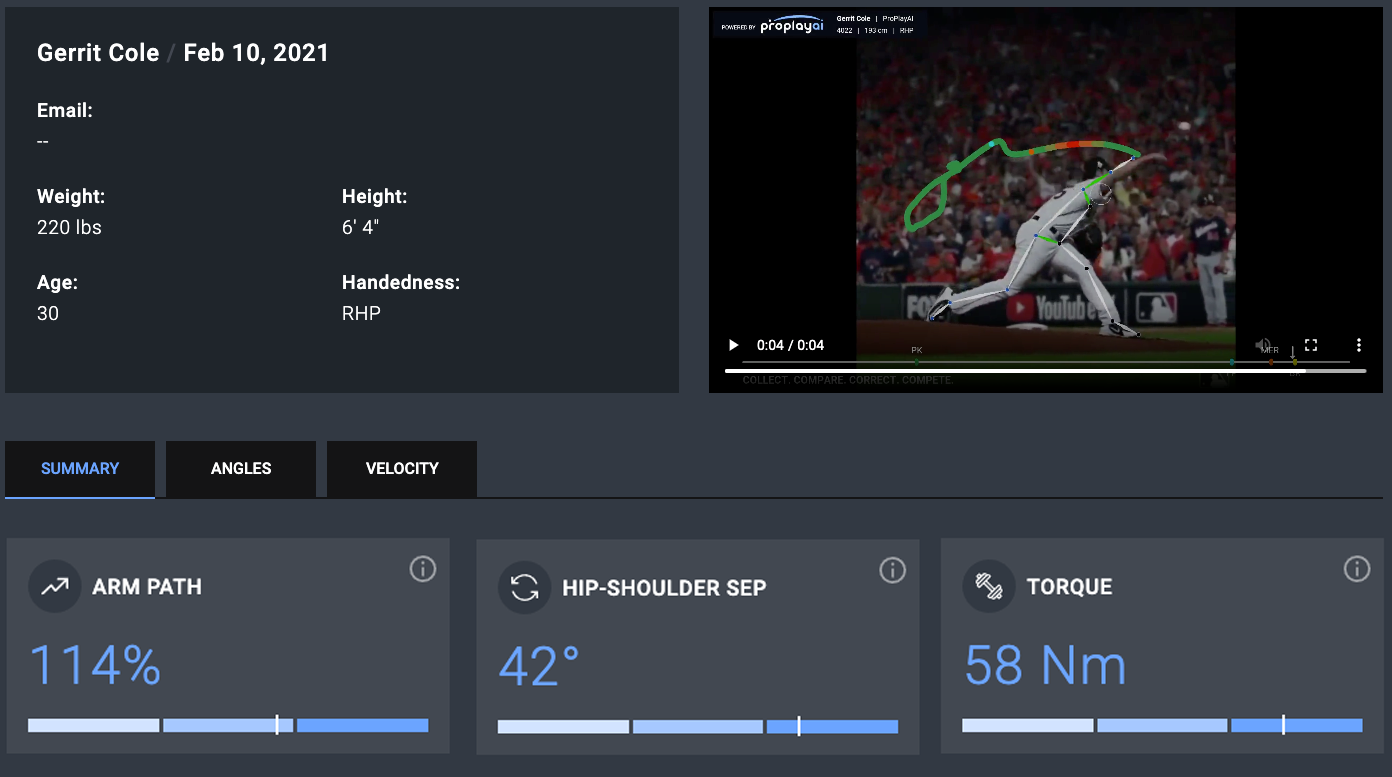Introduction to
Biomechanics Using PitchAI
Colin McKinnon, PhD / Elora Brenneman Wilson, PhD
- Introduction
- Exercise
- Basic Metrics
- Intermediate Metrics
- Advanced Metrics
- Expert Metrics
- Wrap Up
- Quiz
Intermediate Metrics
The main difference between these metrics and those in the basic set are that they require a bit more interpretation. It isn’t just as simple as less is worse, more is better; these values can often be used in conjunction with other measures as either a precursor to changes in performance, or signs of changes in effort level. The intermediate metrics are – Arm Path, Hip Shoulder Separation, and Torque.

The Arm Path metric is intended to replace the descriptors of short arm action and long arm action. Arm path is in units of % total height, and is the total of the distance travelled by the throwing hand between peak kick height (PK), and front foot plant (FP). In our research, we have found that maximum intensity throws typically have longer arm actions, but they also result in higher arm speeds. Are you working with your athlete to shorten their arm action with a connection drill, or other form of implement? Measure their progress before and after the drills to see if the Arm Path metric changes.
Hip-to-Shoulder Separation is measured as the difference between the angle of the shoulders and the angle of the hips. Research illustrates that harder throwers have greater hip-to-shoulder separation than their softer throwing counterparts, but some discretion is required here: having “too open” of a hip position (i.e., hips square to the open side) can make it difficult to make use of the lead leg block. The main reason to achieve hip-to-shoulder separation is to CLOSE hip-to-shoulder separation rapidly, using the trunk as an elastic band to transfer energy from the lower half to the arm, accelerating the ball towards home plate.
Torque is our first measure of kinetics in PitchAI. Torque is a measure of a force exerted at a distance away from a joint. Torque is often used in pitching biomechanics as a method of assessing how stressful a movement is. In most cases, we’re referring to elbow valgus torque – which often gets associated with ulnar collateral ligament injuries and Tommy John Surgery. Torque can be a challenging metric to interpret because it is closely associated with increased velocity and effort. Throwing harder is almost always associated with greater torque levels on the elbow. That being said, if you have two athletes throwing 95 mph with one having 70Nm of torque on their elbow and the other having 60Nm of torque on their elbow, you could infer that the athlete with lower torque levels has a more efficient delivery.
